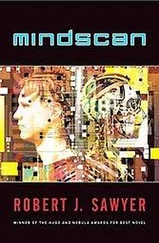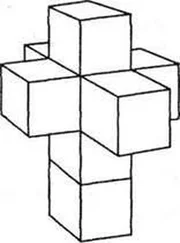Robert Sawyer - Hybrids
Здесь есть возможность читать онлайн «Robert Sawyer - Hybrids» весь текст электронной книги совершенно бесплатно (целиком полную версию без сокращений). В некоторых случаях можно слушать аудио, скачать через торрент в формате fb2 и присутствует краткое содержание. Жанр: Фантастика и фэнтези, на английском языке. Описание произведения, (предисловие) а так же отзывы посетителей доступны на портале библиотеки ЛибКат.
- Название:Hybrids
- Автор:
- Жанр:
- Год:неизвестен
- ISBN:нет данных
- Рейтинг книги:4 / 5. Голосов: 1
-
Избранное:Добавить в избранное
- Отзывы:
-
Ваша оценка:
- 80
- 1
- 2
- 3
- 4
- 5
Hybrids: краткое содержание, описание и аннотация
Предлагаем к чтению аннотацию, описание, краткое содержание или предисловие (зависит от того, что написал сам автор книги «Hybrids»). Если вы не нашли необходимую информацию о книге — напишите в комментариях, мы постараемся отыскать её.
Hybrids — читать онлайн бесплатно полную книгу (весь текст) целиком
Ниже представлен текст книги, разбитый по страницам. Система сохранения места последней прочитанной страницы, позволяет с удобством читать онлайн бесплатно книгу «Hybrids», без необходимости каждый раз заново искать на чём Вы остановились. Поставьте закладку, и сможете в любой момент перейти на страницу, на которой закончили чтение.
Интервал:
Закладка:
The surgeon nodded. “We used to do that,” she said, “but they take time to become effective, time to wear off, and are difficult to localize precisely. Also, of course, some people have allergies to chemical anesthetics.”
“Yet another technology my people will doubtless want to trade for,” said Mary. A second female loomed in-Mary didn’t know anything about Barast medical hierarchies; she might have been a nurse or another doctor, or held some position that had no counterpart in the Gliksin world. In any event, she wrapped an elastic metalized band around Mary’s left forearm just below the elbow, and then attached another one just above the wrist. Then, to Mary’s astonishment, she took out what looked like a fat Magic Marker, and started drawing a complexseries of lines between the two bands. Rather than ink, though, what looked like liquid metal came out. But it wasn’t hot, and it quickly dried, gaining a matte finish as it did so. The color was wrong, but the effect was like that chocolate syrup for ice cream that hardens quickly into a crust. “What are you doing?” asked Mary.
The Barast with the marker made no reply. But the surgeon said, “She is tracing the appropriate nerve trunks in your forearm. The lines form electrical connections between the two destabilizers.”
After a few minutes, the second female nodded, apparently to herself, and moved away, approaching a small control console. She pulled out a series of control buds, and Mary felt her forearm go numb. “Wow,” she said.
“All right,” said Korbonon. “Here we go.” And before Mary knew what was happening, the surgeon had dived in and made a long incision parallel to Mary’s radius. Mary almost threw up as her own blood welled out, spilling onto the little table, which she now noted had a raised lip all around its edge.
Mary was shocked-and was worried about going into shock. In her world, great efforts were taken to keep patients from being able to see themselves during surgery. But here, no thought had been given to that. Maybe having to kill your own food, even occasionally, was enough to put an end to such squeamishness. Mary swallowed hard and tried to calm herself; it really wasn’t that much blood…was it?
She wondered what happened during thoracic surgery. Gliksin surgeons were presented with a patient whose face was covered, and had only a tiny, exposed surgical field. Did the Barasts do it that way, too? The main reason, after all, wasn’t to keep the patient from getting covered with blood. Rather, Mary had been told by one of her doctor friends, it was a psychological aid for the surgeon-a way of keeping him or her focused on the problem in cutting and splicing, rather than thinking of themselves as carving into the home of another human soul. But the Barasts, with their complete lack of Cartesian duality and their indifference to gore, perhaps had no such need.
Korbonon slipped several blue springlike things into the wound that apparently did the same job as forceps, holding it open. Other little clips and doodads were attached to arteries, veins, and nerves. Mary could clearly see into the opening in her skin, cutting through fat and meat all the way down to the slick grayish solidity of her radius.
Moments later, the other Barast-the one who had painted the nerve-deadening lines on Mary’s forearm-moved in. The Barast doctors were wearing short-sleeved yellow shirts and long blue gloves that went past their elbows; Mary thought perhaps they went that high to keep blood from getting matted into their hairy forearms.
The second Barast picked up Mary’s new Companion and removed it from its sterile wrapping. Mary had gotten used to the look of the faceplates, but had never seen the other side of one. It was sculpted like a topographic model, with highs, lows, and channels, presumably to accommodate blood vessels. Mary watched in queasy fascination as her own radial artery-the suicide’s favorite-was severed. It was quickly clamped at both ends, but not before a tube of blood a foot long had shot out.
Mary winced, wondering how Vissan Lennet, the creator of the codon writer, had managed to self-perform the removal of her Companion; it must have been horrendously difficult.
The surgeon next used a laser scalpel, similar to the one Mary herself had had to use when Ponter was shot outside the United Nations. The two ends of Mary’s radial artery were attached to two different apertures on the underside of the Companion. She knew the Companions had no power source of their own; they were fueled by bodily processes. Well, the pumping strength of blood through the radial artery was certainly a good source of power; apparently the Companion had a hydroelectric-or would that be sanguinoelectric? — generating plant built in.
Mary kept meaning to turn away-just as she always quickly hustled past the TV series The Operation on The Learning Channel when surfing. But it really was interesting in an awful sort of way. She watched as the Companion installation was completed, the blood vessels cauterized, and her skin sealed by minute laser blasts. Finally a puttylike caulking was extruded all around the edges of her Companion, apparently to promote healing.
By comparison, the remaining surgery-inserting the two cochlear implants-was minor, or so it seemed, although that might have just been a consequence of Mary being unable to see that part of the operation.
At last, it was all done. Mary’s arm had been wiped clean of blood, the protective film had been removed from the Companion’s faceplate, and the cochlear implants had had their output balanced and tuned.
“All right,” said the surgeon, reaching down to Mary’s forearm and pulling out a small beadlike control bud, one of six, each a different color. “Here you go.”
“Hello, Mary,” said a synthesized voice. It sounded as though it were coming from the middle of her head, exactly between her ears. The voice was Neanderthaloid-deep, resonant, probably female-but it managed the ee phoneme in Mary’s name perfectly; clearly, that problem had been addressed and solved.
“Hello,” said Mary. “Um, what should I call you?”
“Whatever you wish.”
Mary frowned, then: “How about Christine?” Christine was Mary’s sister’s name.
“That’s fine,” said the voice in her head. “Of course, if you change your mind, you’re free to rename me as often as you like.”
“Okay,” said Mary, then: “Say, did you say ‘that’s’ and ‘you’re’?”
“Yes.”
Mary made an impressed face. “So you can use contractions! Ponter’s Companion can’t.”
“It wasn’t a difficult programming issue,” said Christine, “once the underlying concept was grasped.”
Mary was startled by a tap on her shoulder. She’d blanked out the exterior world while talking with the Companion; she wondered if she had tilted her head the way Neanderthals routinely did-whether that was something that happened naturally, or was a learned behavior, a courtesy to let others know that you were momentarily preoccupied.
“So,” said the surgeon, smiling down at Mary, who was still seated in the operating chair. “I take it your Companion is working?” For the first time, Mary heard a translation the way Ponter did-not through an external earpiece, but as words flowering full-blown in her head. The Companion was a good mimic; although the English words were emphasized at bizarre points-as if William Shatner were saying them-they were presented in a voice much like the surgeon’s own.
“Yes, indeed,” said Mary-and as soon as she’d finished, her Companion’s external speaker announced what Mary recognized as the Neanderthal equivalent: “ Ka pan ka. ”
“All right, then,” said the woman, still smiling. “That’s it.”
Читать дальшеИнтервал:
Закладка:
Похожие книги на «Hybrids»
Представляем Вашему вниманию похожие книги на «Hybrids» списком для выбора. Мы отобрали схожую по названию и смыслу литературу в надежде предоставить читателям больше вариантов отыскать новые, интересные, ещё непрочитанные произведения.
Обсуждение, отзывы о книге «Hybrids» и просто собственные мнения читателей. Оставьте ваши комментарии, напишите, что Вы думаете о произведении, его смысле или главных героях. Укажите что конкретно понравилось, а что нет, и почему Вы так считаете.










